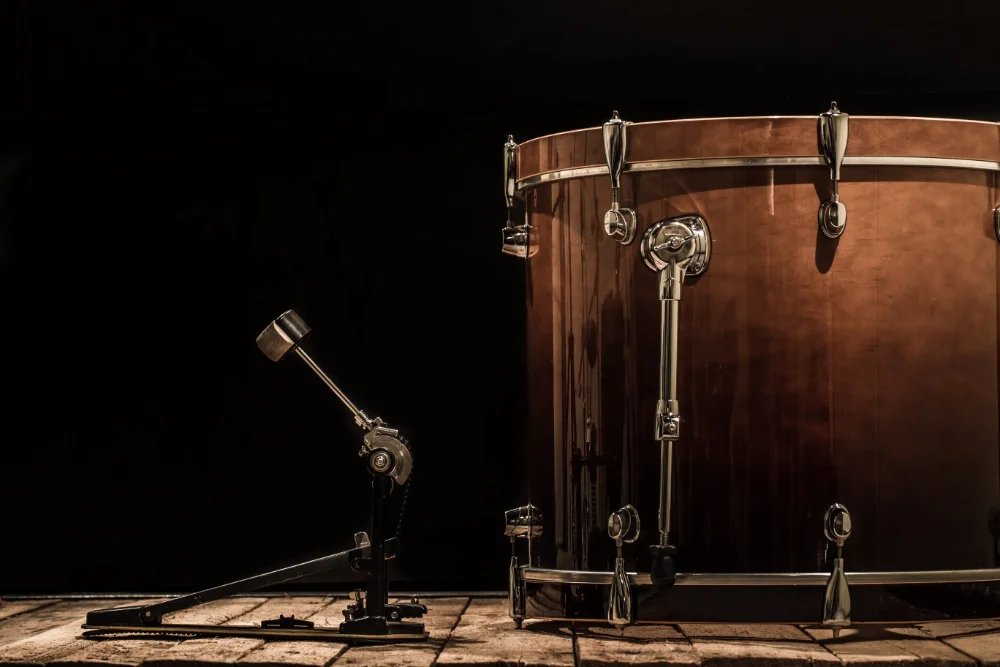If you’re looking for the ultimate guide to EQ Kicks, then look no further! As an experienced sound engineer and producer, I know just how important it is to get that punchy kick drum sound. This article will show you all the tips and tricks necessary to achieve a professional-quality mix with your kicks. Whether you’re a beginner or a pro, my methods are sure to give your music that extra oomph it needs.
It’s not as difficult as you might think–with some simple tweaking of your EQ settings, you can make those kick drums pop in no time. I’ll walk you through everything from selecting the right frequency range to cutting out unwanted low end rumble. Plus there are plenty of additional ways to shape and sculpt your kick sounds so they stand out like never before!
We’ve got lots of ground to cover, so let’s jump right into the Ultimate Guide To EQ Kicks: Get That Punchy Kick Drum Sound! Prepare yourself for big results – this journey is going to be well worth it in the end!
Understanding Eq
Picture this: you’re in the studio and your goal is to get that perfect punchy kick drum sound. You know you need to use EQ, but with all the frequency ranges, settings and gain control at your disposal it can be daunting. That’s why understanding eq fundamentals is so important–it gives you a solid foundation for sound shaping.
When starting out, keep in mind that most of our hearing range lies between 20-20,000 Hz. This means the typical kick should sit somewhere around 40-80 Hz on the low end and 80-120Hz on the high end. As far as EQ settings go, try boosting up to +6dB or -3dB depending on what kind of tone you want. Gain control also plays an important part when setting up kicks because it helps manage overall levels without affecting tonality too much.
With these basics under your belt, you’ll be ready to start crafting some killer kick sounds!
Setting Up The Kick Drum
Now that you understand the basics of EQ, it’s time to apply them to setting up your kick drum. The goal is to create a punchy sound with plenty of low end frequencies. To achieve this, start by adjusting the eq settings on your kick drum so that there’s an even balance between high and low end frequencies. This will help give you a fuller, more rounded tone when playing back the track.
Next, adjust the mid range frequency levels to bring out certain elements in the kick drum sound. You may want to boost or cut some of these frequencies depending on what kind of character you are looking for in the overall mix. Finally, experiment with adding reverb or other effects if desired to further shape the sound of your kick drum. With all these tips, you should be able to get great results from your kick drum setup!
Applying Eq To The Kick Drum
Applying EQ to a kick drum can be an essential part of achieving the desired sound. When eq’ing a kick, it’s important to have knowledge of both standard eq settings and various eq techniques. To start off with basic eq settings, I recommend cutting some low frequencies around 100 Hz – 150 Hz to help keep the mix clean. Then boost between 200-400 Hz for more punch or presence in the upper midrange. This will give your track that extra “kick” without adding too much overall volume. Lastly, apply a high shelf filter at around 10 kHz for added clarity and attack on the transient peaks.
Eq techniques are another powerful way to shape your kicks beyond just setting simple parameters. Automation is one technique you can use to manipulate certain frequency ranges throughout different sections of a song or even within individual measures. Sidechain compression is another great tool when mixing drums as it helps create space between elements by ducking other instruments out of the way while the kick hits its peak level. Experiment with multiple different methods until you find something that works best for your project. With these tools at your disposal, you’ll be able to craft any type of kick sound you want! Now let’s move onto enhancing clarity in the low end…
Enhancing Clarity In The Low End
Now that you’ve applied EQ to the kick drum, it’s time to enhance clarity in the low end. To do this, we’ll focus on increasing punchy low frequencies while also adding detail and focus to the bass drum. This will help create a well-defined sound with plenty of power and projection when heard in any mix.
To achieve this, start by boosting your mid-range frequency around 200 Hz and increase it until you get a nice fullness in your low end. Try not to go too high though as overdoing it can lead to muddiness. Once you’re happy with where things stand, use the same techniques from before but instead boost or cut at lower frequencies such as 60 – 80 Hz for added definition and impact. Finally, experiment further by cutting out anything below 40Hz as these are unnecessary lows that don’t add anything positive to the overall sound. With careful tweaking and attention to detail, you should now have a much clearer picture of what makes up your kick drum’s low end!
Creating A Punchy Kick Drum Sound
Creating a punchy kick drum sound involves more than just EQ-ing the signal. Achieving clarity and impact in your kicks requires careful low end mixing, as well as utilizing specific eq techniques. Here are four key points to keep in mind when crafting that dynamic kick sound:
- Start with a clean signal – This is essential for getting the most out of any mixdown. The clearer your starting point, the better you’ll be able to shape the final result.
- Consider how frequency interacts with other elements – Whether it’s cymbals or bass lines, each element will occupy its own unique space within the overall sonic spectrum. When EQ-ing a kick drum, consider what frequencies need to be cut from other elements so as not to interfere with your desired sound
- Cut before boosting – Before adding presence or power to a kick drum signal via an equalizer, try cutting some lower mid range frequencies first; this can help create headroom for further shaping of the high mids and highs without overwhelming those higher frequencies.
- Use automation if necessary – If there are sections of your song where extra punch is needed on certain beats, using automation can really bring them alive. Automation allows you to boost certain frequencies during particular moments while maintaining a consistent tone throughout the rest of the track.
Knowing these basic concepts around kick drum punch and clarity will give you an edge when it comes time to start mixing down tracks featuring heavy kicking action! Now let’s look at ways we can use various mixing techniques to enhance our kicks even further.
Mixing Techniques For Enhancing Your Kicks
Have you ever tried to get a punchy kick drum sound, but been disappointed by the low end clarity of your mix? Mixing techniques are an essential part of getting your kicks sounding just right. Let’s explore some mixing techniques for enhancing your kicks.
| Technique | Benefit | Drawbacks |
|---|---|---|
| EQing and Compression | Enhances harmonic content and boosts frequencies that need emphasis in the mix | May introduce distortion from excessive compression or too much high frequency boost with EQ. Can also reduce dynamics if not used cautiously. |
| Sidechain Compression | Locks down a rhythm section and helps bring out individual elements within it like the kick drum | Can be tricky to set up properly and may require experimentation before achieving desired results. Also can lead to unnatural sounds when overdone. Can cause phasing issues with other instruments in the mix, as well as muddiness if used incorrectly. |
| Layering Kicks & Synths | Adds depth and complexity to a track while allowing more control over individual elements of the mix such as panning, volume levels etc… | Too many layers can create unwanted noise or muddy up the overall tone of the track; must be careful when blending different elements together so they don’t compete against each other in terms of tonal characteristics. |
These mixing techniques all have their own benefits and drawbacks depending on how you use them in your production process – so experiment until you find what works best for you! All these tips will help bring out clarity and enhance your kick drums’ power without compromising its natural sound quality – try using any combination to achieve that perfect punchy kick drum sound!
Final Tips And Advice
When it comes to mixing kicks, there are a few final tips and pieces of advice that will ensure you get the punchy kick sound you’re after. Firstly, always consider your low end when mixing. A good mix relies on making sure each individual element is balanced in relation to everything else in the track – this includes ensuring that any kick drums don’t become too ‘boomy’ or overpowering. Secondly, experiment with different EQ settings; try boosting certain frequencies while cutting others until you achieve an optimal balance between clarity and power.
Lastly, remember: every kick drum has its own unique character and as such should be treated differently during the mixing process. Listen closely and make adjustments accordingly until you have achieved the desired result! The most important thing is to take your time and play around with various settings until you find what works best for each particular mix.
Frequently Asked Questions
What Is The Best Type Of Kick Drum To Use For A Punchy Sound?
Ahh, the bane of every audio engineer’s existence: mixing a kick drum! You might think you’ve exhausted all possible options to get that punchy sound but fear not – I’m here to tell you there are still plenty of tricks up our sleeves. What is the best type of kick drum to use for a punchy sound? Well, let me break it down and give you some tips on how to select the right mic, EQ techniques, mixing tricks and even drum layering.
When selecting the right microphone for your kick drum make sure it can capture both low-end frequencies as well as higher pitched tones. Depending on what kind of sound you’re after will determine which mic works best in this situation; perhaps a dynamic or condenser would work better than others. Once you have selected your microphone, start turning attention toward EQ settings. This is where things really get interesting! By using classic equalization techniques such as boosting around 350Hz or cutting at 3kHz, we can shape the tone of our kick drum just enough so it stands out in the mix without overpowering everything else.
Mixing tricks like parallel compression and sidechain compression also come into play when trying to achieve that perfect kick sound. Not only do they help with levels but they add an extra layer of depth and texture too. Finally don’t forget about drum layering either – adding samples from different sources helps create more variety within each track while keeping everything sounding tight and cohesive overall. So next time you find yourself struggling to get that punchy kick sound remember these key points and see if any apply to your current project.
What Is The Best Type Of Microphone To Use To Record A Kick Drum?
When it comes to recording kick drums, selecting the right microphone is essential. With so many different mics on the market, it can be difficult to determine which one will capture that punchy sound you’re after. As an experienced audio engineer and sound designer with plenty of experience in EQ and kicks, I’m here to help! When choosing a mic for your kick drum recording, there are certain qualities you should look out for.
Firstly, make sure that the microphone you choose has a good frequency response range, as this will allow your kick drum to cut through other sounds during mixing and mastering. You’ll also want something that doesn’t pick up too much low-end rumble or room noise – both of these things can muddy up your mix if not taken into consideration when selecting the best microphone for kick. Additionally, consider whether or not you need multiple microphones to get a fuller sound – most engineers prefer to use two mics on their kick drum in order to achieve a richer tone.
In short, finding the perfect microphone for your kick drum takes some trial and error – but once you find the right fit, you’ll have no trouble getting that punchy sound you’ve been looking for! Make sure to take into account all of these important factors when deciding which type of mic is best suited for kicking off your next big project.
How Can I Make My Kick Drum Sound More Powerful?
If you want to make your kick drums sound more powerful, there are a few tricks of the trade. To start, shorten the attack and increase the sustain, this will give your drum an extra punchy feel. Boosting the low-end frequencies can also add power and depth to your kick drum’s tone. Here are some other tips for getting that punchy kick drum sound:
- Use compression – This helps bring out dynamics in your kicks and gives them a fuller sound.
- Add distortion – Adding distortion or grit to your kick drums can help create unique sounds with lots of character.
- Experiment with EQ settings – Try adjusting certain frequencies on your eqs until they suit what you’re looking for in terms of tonal quality.
These techniques don’t have to be used all at once; experiment with different combinations and find what works best for you. As an audio engineer/sound designer who has worked extensively with EQ/kicks, I know these techniques can really take your music production up a notch! So try them out and see how it affects the overall mix.
How Do I Adjust The Eq Of The Kick Drum In My Mix?
Adjusting the EQ of your kick drum in a mix can be an absolute game changer! You could bring out its true power, add definition to it and make it punch through the mix like never before. But how do you adjust the EQ for that perfect kick drum sound? It’s not as daunting as it may seem; here are some tips on how to get started with kick drum frequency adjustment:
- Know what frequencies you want to boost or cut from the kick * Find the right settings for each frequency * Experiment – don’t be afraid to try different things until you find something that works for your track * Understand why certain frequencies work better than others (this is where experience comes in) * Make sure to check regularly if too many frequencies overlap
By getting familiar with EQ adjustments, you’ll have more control over your kick drum tone. Knowing which frequencies should be boosted or cut will help you achieve that punchy sound even faster and easier. And while experimenting is key, there are still rules of thumb when it comes to mixing kicks. For instance, boosting around 100-200 Hz can give your kick more body while cutting between 5 kHz – 8kHz helps reduce harshness. By understanding these basic starting points, adjusting EQ won’t feel so intimidating anymore!
What Other Elements Should I Add To My Kick Drum To Create A Fuller Sound?
When it comes to getting that punchy kick drum sound, there are several elements you can add to your mix. This includes adjusting the EQ of your kick drum, adding a kick-snare combination, bass-drum hits and cymbal crashes. All of these elements will help create fuller sounding kicks in your mix.
Compression effects and additional processing on the kick can also make all the difference when trying to achieve a powerful sound. By using compression, you’ll be able to control the dynamics of the kick so it stands out among other instruments without overpowering them. You may also want to adjust some of the parameters such as attack time or release time for more precise control over how the kick sounds in your mix.
In addition, carefully chosen effects like distortion or reverb can bring out new colors and textures from your kick drums which could give them extra character and depth. Experimentation with different types of processing is key here – play around with various settings until you find something that works best for what you’re going for!
Conclusion
As an experienced sound engineer, I know how to use EQ and kick drums to create a powerful, punchy sound that will engage any listener. With the right type of kick drum and microphone selection, you can get started on setting up your mix for success. By adjusting the EQ of the kick drum in your mix and adding other elements like reverb or compression, you can make sure it stands out from all the rest.
When crafting a punchy kick drum with EQ, always remember to keep things simple. Don’t overcomplicate your settings — just adjust them until they sound good! As far as adding other sonic elements go, experiment with different combinations until you find something that sounds great. Just make sure not to clutter up the mix too much – simplicity is key.
Once you’ve perfected your EQ-kicks setup, prepare yourself for some amazing results! Your mixes will have more clarity and energy than ever before – guaranteed! So what are you waiting for? Get creative and unleash the power of eq kicks today!
Access the Largest Archive of Free Music Production Tools Ever Created with SoundShockAudio

Subscribe to SoundShockAudio and access our extensive library of free music production tools, including Music Production Apps, Sample Packs, and more. Take advantage of our comprehensive tools to create music that truly resonates with your audience.
Need more help when it comes to EQing check out the article, how to eq out plosives.
Also check out this other article how to eq trumpet, for more EQing tips.




